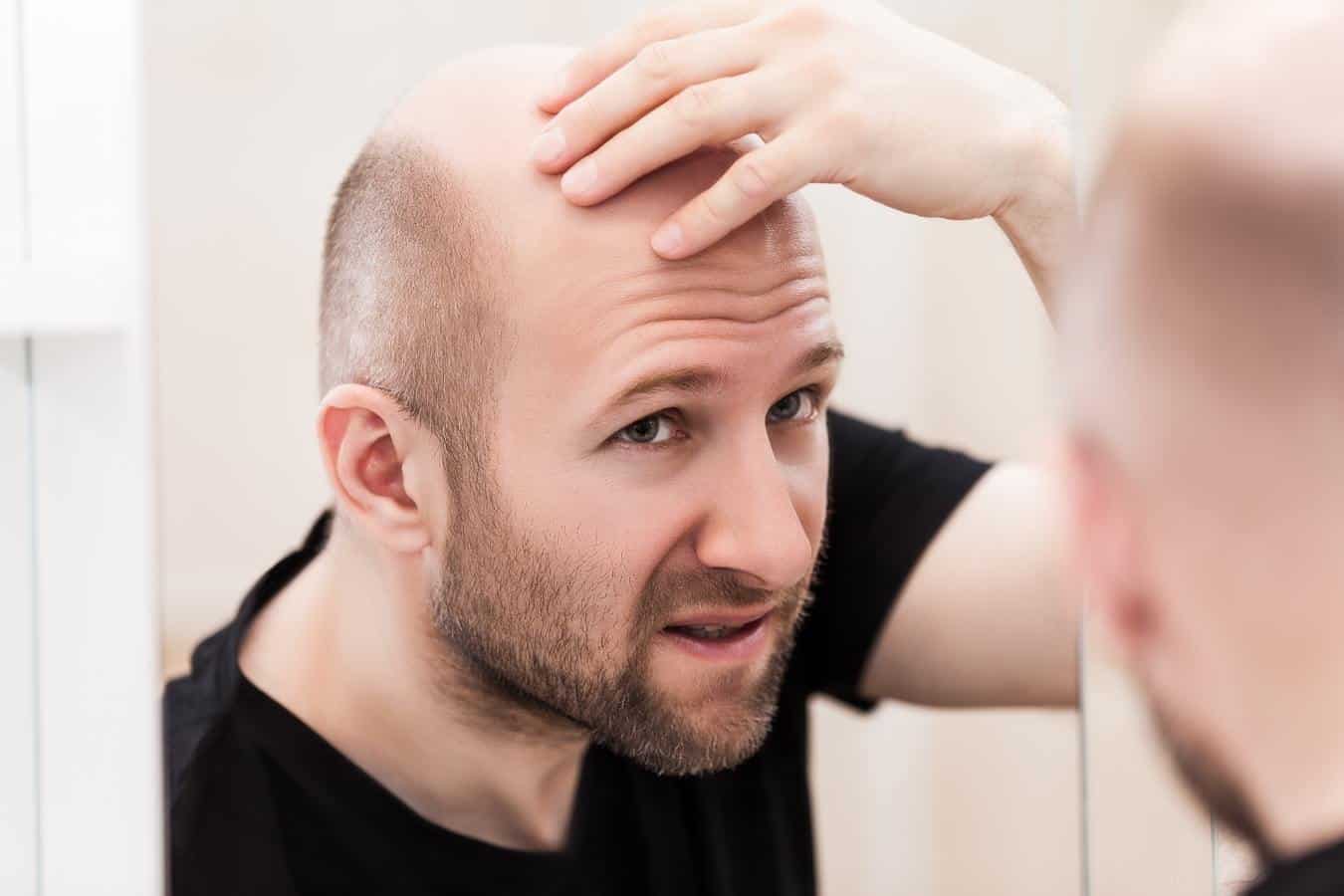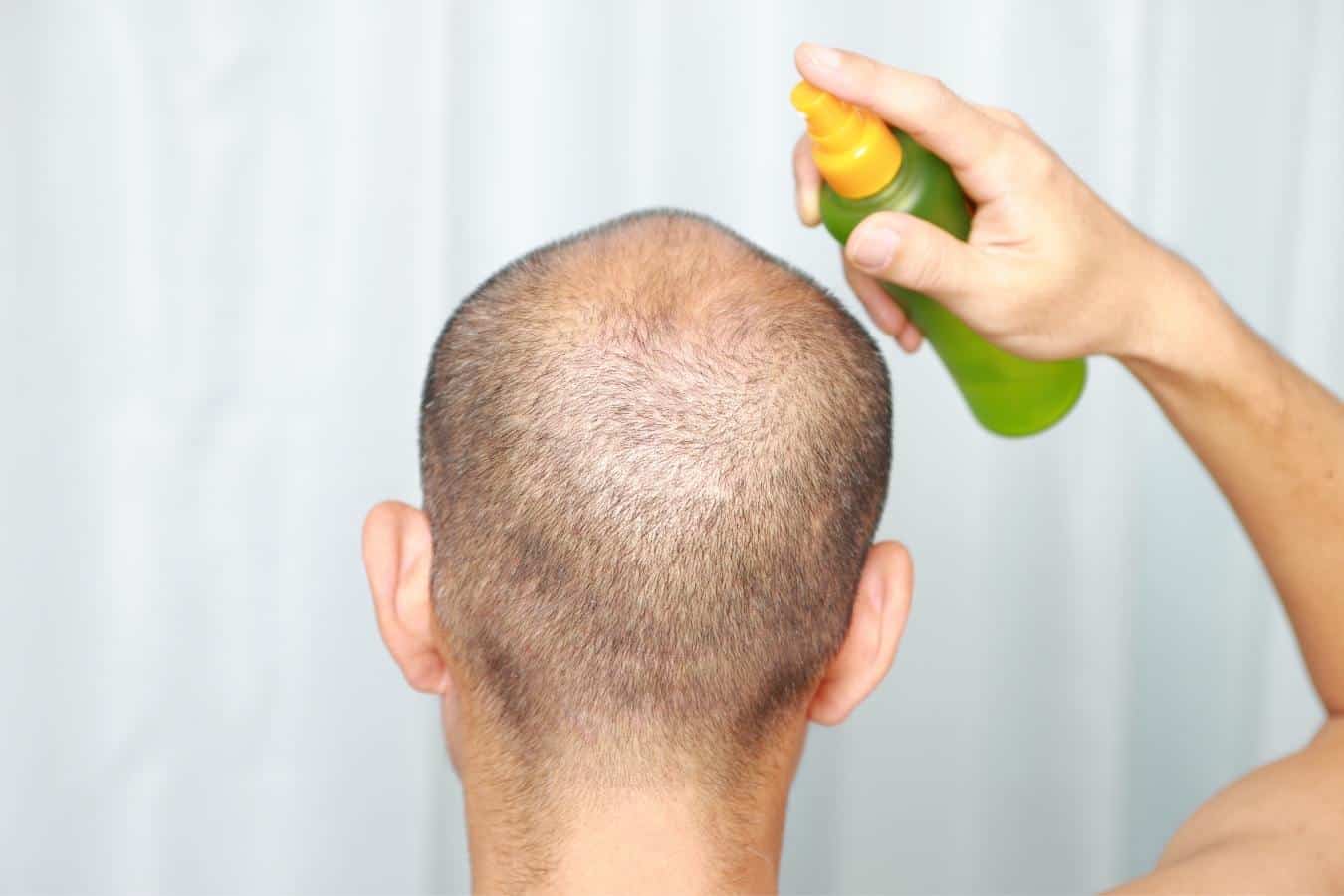Hairline recession is a common issue in both men and women. However, the issue is more frequently seen in men.
Fortunately, if you are suffering from this condition, there are several options for restoring your hairline, with the most common being hairline restoration.

Hairline restoration is a form of hair transplant surgery that uses your own hair follicles from other regions of your scalp as grafts at the front of your scalp and other locations where hair loss is prominent.
Typical Hair Recession Signs
There are several signs of hair recession, depending on the cause.
Also, this condition can come suddenly or gradually, and it can affect your scalp only or other areas of your body as well. Here are some of the common signs of hairline recession:
Gradual Thinning on Top of Head
This is the most common sign of hairline recession, and it’s usually seen in people as they age.
In males, hair typically starts receding at the hairline on the forehead. On the other hand, women usually have a broadening of the same region in their hair.
In older women, however, the pattern is a little different. You will typically notice a receding hairline, the same way men lose their hairline.
An Uneven Hairline
People often confuse hairline maturation and recession. Hairline maturation is a normal process, but the recession is not.
Unfortunately, it can be difficult to tell the difference.
However, one of the major differences between the two is the evenness or unevenness of the hairline.
If your entire hairline has fallen back a little and uniformly, then it’s likely maturation.
On the other hand, an uneven recession can be a sign of a hairline recession. Once you notice this, you must consult a specialist.
Thinning of Hair at the Temples
Hairline recession is a gradual process.
Over the period of time that your hairline will be receding, you will notice that the hair at your temples begins to thin.
This is an indication that more hair is shedding than growing in.
Excessive Shedding of Hair
Under normal circumstances, people usually shed about 50 to 100 hairs per day. If you start losing more hair than this, then you should be concerned.
An increase in shedding usually starts off as being subtle, and it builds up to a point where it becomes quite noticeable.
Circular or Patchy Bald Spots
In some people, hair loss can be visible as circular or patchy bald spots on the scalp. It’s also common to experience itchiness or a bit of pain in the area where hair will be falling out.
Causes of Hairline Recession

There are several factors that contribute to hairline recession such as genetics, aging, hormones, and disease.
Apart from pathological causes, as you grow older, your hairline will begin to fall back.
This is a natural part of aging. However, although this is normally seen in older people, it may affect young people as well.
According to the Journal of Investigative Dermatology, 80% of men will have a receding hairline by age 80. Read on for more causes of the hairline recession.
Hormonal Changes
Hormonal changes can trigger hair loss in both males and females. One of the hormones thought to be linked to male pattern baldness is BHT.
This hormone causes follicles to shrink, which stops hair from growing in them.
Family and Genetics
Genetics seems to play a major role in receding hairlines. Men who come from families with a history of baldness are more likely to lose hair as they grow older.
It has been observed that hair loss can even follow a similar pattern to previous generations.
Medications and Treatments
There are several medical procedures and treatments that can cause hair loss. One such treatment is chemotherapy, which is notorious for causing hair to fall out.
Stress and Illness
Hairline recession can also occur because of sickness and stress.
However, instead of losing hair gradually, people who lose hair because of sickness usually experience a sudden loss of hair.
This condition is known as telogen effluvium.
Fortunately, even without treatment specific to hair loss, this type of hair loss often corrects itself when the individual recovers.
Lifestyle choices
There could also be a link between certain lifestyle patterns and hairline recession. For instance, people who smoke seem to experience hair loss quicker than nonsmokers.
There might also be an association between certain diets and hair loss. For example, individuals who do not get enough protein are likely to lose their hair quicker.
What Exactly Is A Hairline Restoration?
As you might have guessed, hairline restoration is the process of stopping a hairline from receding and even reversing the effects of hair loss.
This process can be done using drugs or surgery. Surgically, hair is restored by harvesting an implant from a donor site and transferring it to their receding hairline.
As with any elective procedure, patients who are willing to try this method must have realistic expectations.
Hairline restoration surgery will restore the frontal hairline and add some density to the crown area, but it will not bring things back to the way they were original.
Fortunately, most patients are quite pleased with the results.
Types of Hairline Restorations

There are several types of hairline restorations. Some methods are natural, some involve the use of medications, and some are surgical.
Natural Remedies
Natural remedies can be used to restore a receding hairline. For instance, you can eat a healthy diet that contains a lot of antioxidants.
These agents fight oxidative stress, which can contribute to aging or hair.
There are several foods that are packed with antioxidants, including kidney beans, spinach, and blueberries.
You must also ensure that your diet contains vitamins A, B-12, E, Iron, and Zinc which are essential for hair growth.
There are also several herbal remedies that can help with hairline restoration. These include gooseberry, aloe vera, and ginseng, among others.
Apart from herbal remedies, other specialists recommend switching to a gentle shampoo.
There are certain shampoos that are designed to stimulate hair follicles. Most of these contain an ingredient called Ketoconazole.
There is data suggesting that essential oils can help promote hair growth. The main essential oils that can help with a receding hairline include coconut, jojoba, or almond oil.
These oils can even be used to perform a scalp massage. Scalp massages on their own are known to make hair grow thicker and healthier by increasing blood circulation to the hairline, which helps to stimulate the follicles.
Treatments
One of the treatments used to help with receding hairlines is Minoxidil. The treatment comes in at two percent and five percent strength.
The two percent strength is more inclined towards addressing female hair loss. It improves blood flow to the scalp, which stimulates hair follicles to encourage hair growth.
Another common treatment used for hairline restoration is Finasteride. This is a prescription medication also known as Propecia.
It lowers the levels of hormones that are responsible for the hairline recession.
When taken as directed, this drug has been shown to be quite effective in stopping hair loss and promoting hair growth.
Hairline Restoration Services
Hair restoration services are specialized techniques that are used to restore receding hairlines. These include surgery, laser therapy, and a variety of non-surgical methods.
With surgery, hair restoration specialists will surgically transplant hair from other areas of the scalp to the hairline.
Laser therapy, on the other hand, is noninvasive, and it makes use of low-level laser treatments that stimulate hair regrowth and can reverse hair loss in some instances.
There are also other methods that can enable you to regrow your hair and get the full head of hair and hairline you’ve always wanted.
When Should You Visit a Specialist?
You must visit a specialist the moment you start being distressed by persistent hair loss and progressive hairline recession.
If you’re a woman, you’re encouraged to pursue treatment the moment you start noticing signs of a receding hairline.
Delaying treatment any further reduces your chances of getting the best results and can lead to permanent baldness.
It’s also advisable to consult a specialist when you start noticing sudden or patchy hair loss or more than usual hair loss. This usually signals an underlying medical condition that should be treated.
How Is a Receding Hairline Treated?
Apart from treatments like Minoxidil, treatments like anthralin can also be used to treat a receding hairline.
A prescription of anthralin, also known as dritho-scalp, can also encourage new hair growth in some individuals.
This medication is usually used to treat psoriasis, although it can also help spark new hair growth.
Corticosteroids treatments are also used to stop hair loss.
These medications work by lowering the levels of inflammation around your hair follicles. This allows the hair follicles to open up and grow new hairs.
However, it’s important to note that corticosteroids may produce adverse side effects.
This means anyone who is considering trying them out for hair loss must do so under the supervision of a doctor.
Disclaimer: This site is not intended to provide professional or medical advice. All of the content on LovedByCurls.com is for informational purposes only. All advice should be followed at your own discretion. Ingredients may change at any time so always check the product label before using. Check our full disclaimer policy here.
